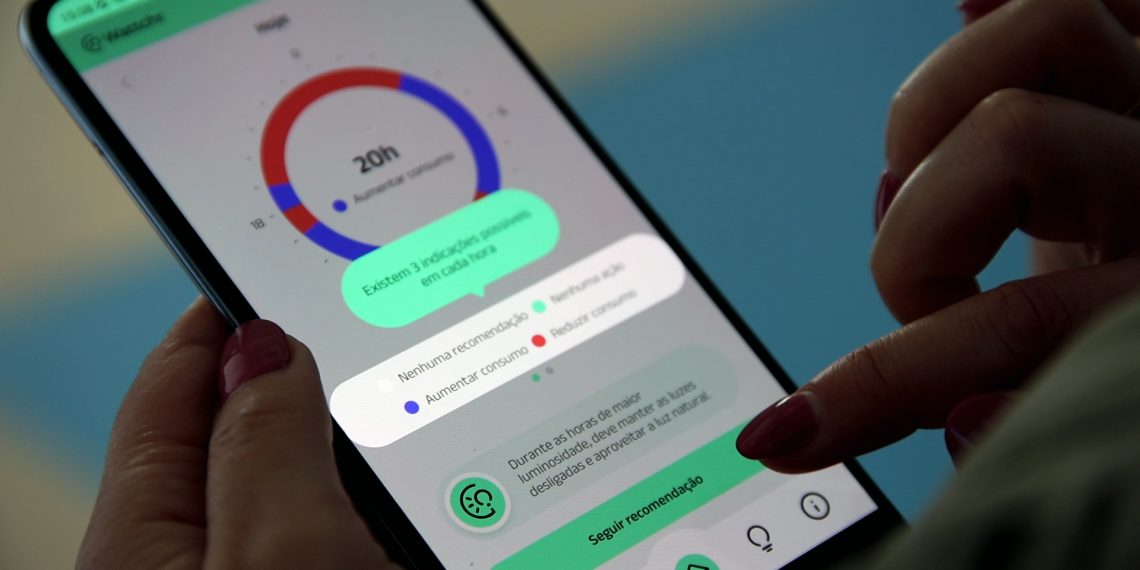Turning the heat inside our homes, charging our vehicles or doing the laundry: the energy bill increased household costs throughout Europe since the beginning of the war in Ukraine, and the risks to the energy systems forced the EC to advance plans for a more robust grid. One of them: create mobile applications and allow consumers to manage their consumption.
INESC TEC developed the interoperability structure that made it possible to create an ecosystem of mobile applications using the same tool, so that more consumers have access to consumption reduction and increase recommendations. Portugal was one of the 12 countries that integrated the pilot within the framework of the European project InterConnect.
“The main goal of these applications is to provide consumers with a way to analyse and manage their electricity consumption in a simple and intuitive way, and to act voluntarily according to recommendations provided by third parties,” explained Carlos Silva, researcher at INESC TEC. In essence, these digital tools made it possible not only to improve the consumers’ own indicators, but to contribute to protecting the power grid, avoiding situations of vulnerability – either by reducing the load or by boosting electricity from renewable sources.
“The recommendations relate to the margin of the power system of a given country, and the classification of its operational status as healthy or at risk,” said Carlos Silva. These alerts (push notifications) are defined for different European countries simultaneously, “and provided to consumers to explore the flexibility of consumption”.
The solution developed by INESC TEC is called “Interoperable Recommender“. The Institute was responsible for the “design, development and implementation of algorithms that allow the definition of recommendations for consumers”, added Carlos Silva. “It includes the maintenance of all the infrastructure necessary for the execution of the service, so that the recommendations for all countries were available continuously during the period of the pilot projects.”
The data used by the tool comes exclusively from public sources, like the ENTSO-E Transparency Platform. But it took more than data. In this sense, INESC TEC developed the interoperability structure to make them available to the application ecosystem. The transformation of the raw data, together with the signal of the Distribution Network Operator (DSO) of each country allows the sending of recommendations. In Portugal, INESC TEC worked alongside E-REDES to send suggestions via Wattch.r – the Portuguese application is still active, even after the end of the InterConnect project, and is available for download.
And there are indicators that help understanding the impact of the recommendations on consumption habits in Portugal. Of the almost 70 consumers who participated in the pilot, more than 80% rated with four or five stars (from zero to five) how committed they were to adopting actions provided by the Interoperable Recommender.
Speaking the same language
The starting point for this solution happened in 2023, when the European Commission published the Digitalising the Energy System – EU Action Plan so that all solutions developed spoke the “same language”. INESC TEC, through the InterConnect project, was a key player in this standardisation process.
“InterConnect took on the task of developing the first generation of the Common European Framework of Reference (CEFR) and delivered the first blueprint in 2023, which served as an initial guide for applications related to energy management and savings. The validation was done through the development of an initial version and, later, large-scale demonstrations in three countries, and additional demonstrations in nine countries using a cascade funding mechanism,” explained the researcher.
Following an open data policy, the code used for the Interoperable Recommender is available on INESC TEC’s Github.
InterConnect made interoperability a keyword for five years and explored the future of integration of digital and intelligent systems, using consumer-centred applications to improve energy use, contributing to greater resilience of the power grid – using interoperable technologies. Semantic-based interoperability has been validated in different countries and contexts. There were two pilots in Portugal: one for residential and another for business consumers.
The researcher mentioned in this news piece is associated with INESC TEC.



 News, current topics, curiosities and so much more about INESC TEC and its community!
News, current topics, curiosities and so much more about INESC TEC and its community!